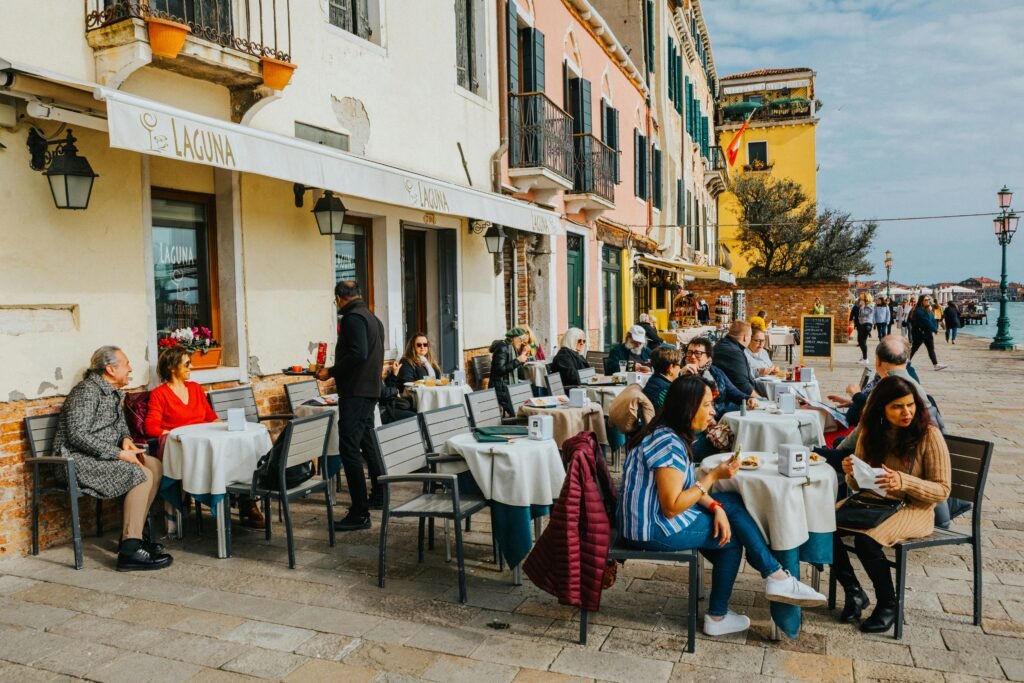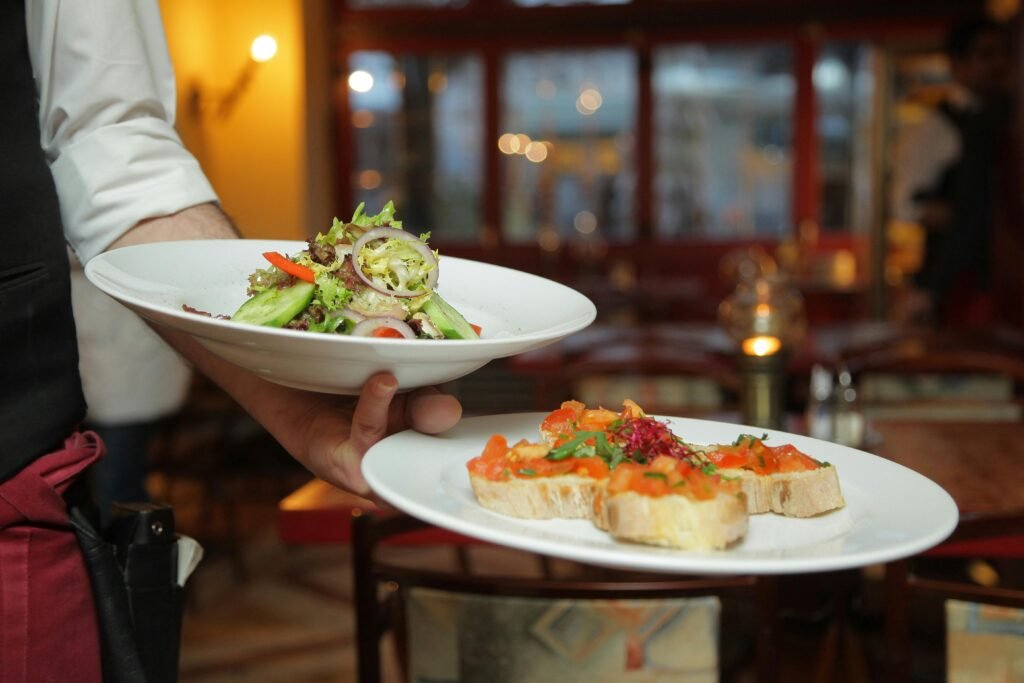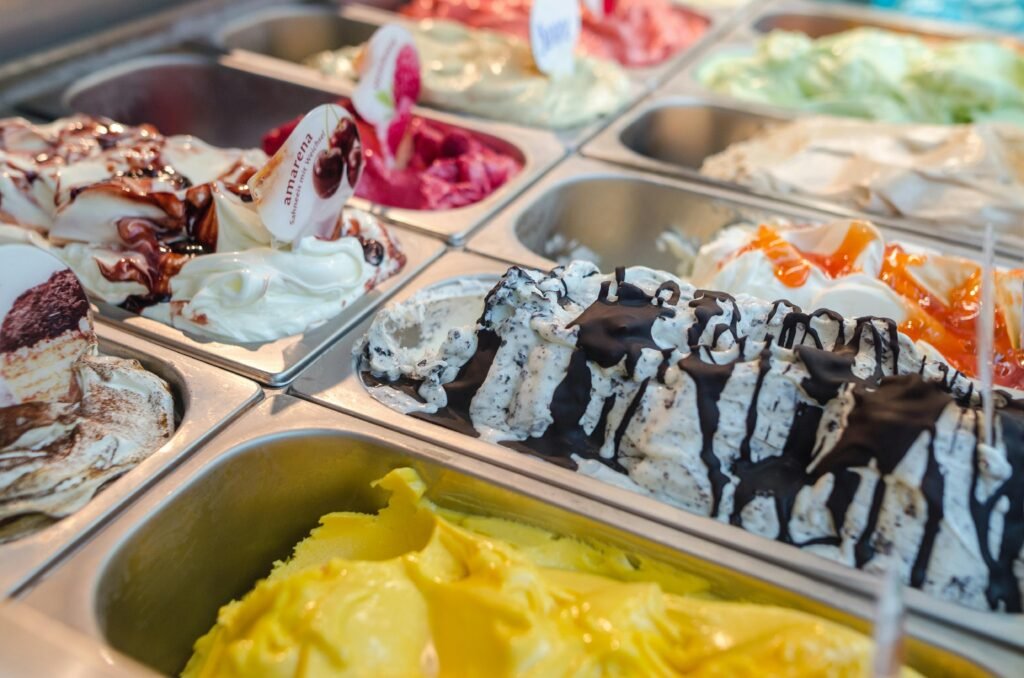Did you know that Florence is home to over 2,500 restaurants packed into just 40 square miles? That’s one restaurant for every 156 residents!
I’ll never forget my first bite of authentic Florentine steak at a tiny trattoria tucked away near the Oltrarno district.
There are a lot of things to do in Florence and food tour one of them.
That moment completely changed how I think about food travel, and honestly, it’s what sparked my obsession with Florence food tours.
If you’re planning a trip to this incredible city, you’re in for a treat that goes way beyond the typical tourist restaurants.
Types of Florence Food Tours Available
Walking Food Tours
Walking tours are probably the most popular option, and for good reason.
You’ll typically spend 3-4 hours strolling through different neighborhoods, stopping at 6-8 different spots to sample everything from street food to restaurant specialties.
I’ve found that small group walking tours (8-12 people max) give you the best experience.
Most walking tours cover the historic center, including stops at the Central Market, local bakeries, wine bars, and traditional trattorias. Expect to walk about 2-3 miles total, so wear comfortable shoes!
Market Tours and Cooking Classes
These are absolutely fantastic if you want hands-on experience.
You’ll start at the San Lorenzo Market or Mercato di Sant’Ambrogio, where your guide helps you select fresh ingredients while explaining what to look for in quality produce, meats, and cheeses.
Then you head to a cooking school or someone’s home kitchen to prepare a full Tuscan meal.
The best part? You get to eat everything you’ve prepared, usually paired with local wines.
Wine-Focused Food Tours
If you’re into wine (and honestly, who isn’t when they’re in Tuscany?), these tours are incredible.
They typically include visits to 3-4 different wine bars or enotecas, where you’ll taste regional wines paired with appropriate foods.
You’ll learn about Chianti Classico, Brunello di Montalcino, and other Tuscan varieties while nibbling on local cheeses, cured meats, and traditional appetizers.
Some tours even include a short trip to nearby vineyards if you have a full day available.
Street Food and Market Tours
These are perfect for travelers on a budget or those who prefer casual dining experiences.
You’ll hit up food trucks, market stalls, and casual eateries to try things like lampredotto (a traditional Florentine sandwich), schiacciata (flatbread), and various market snacks.
Street food tours move at a faster pace and cover more ground, so you’ll get to see different neighborhoods while sampling authentic local favorites that many tourists never discover.
Must-Try Foods on Your Florence Tour
Bistecca alla Fiorentina
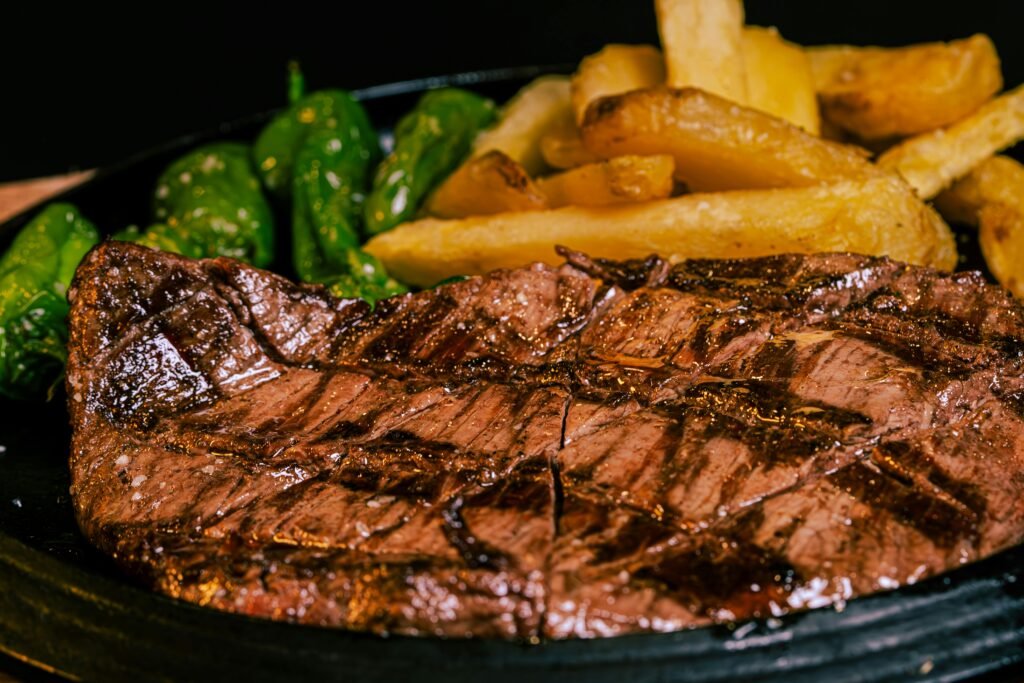
This is the king of Florentine cuisine – a massive T-bone steak from Chianina cattle, grilled over chestnut wood and served practically raw in the center.
It’s traditionally shared between two people and costs around 50-60 euros per kilo.
Here’s what I learned the hard way: never ask for it well-done. Seriously, some restaurants will politely refuse to serve it that way because it goes against everything they believe about proper preparation.
Ribollita
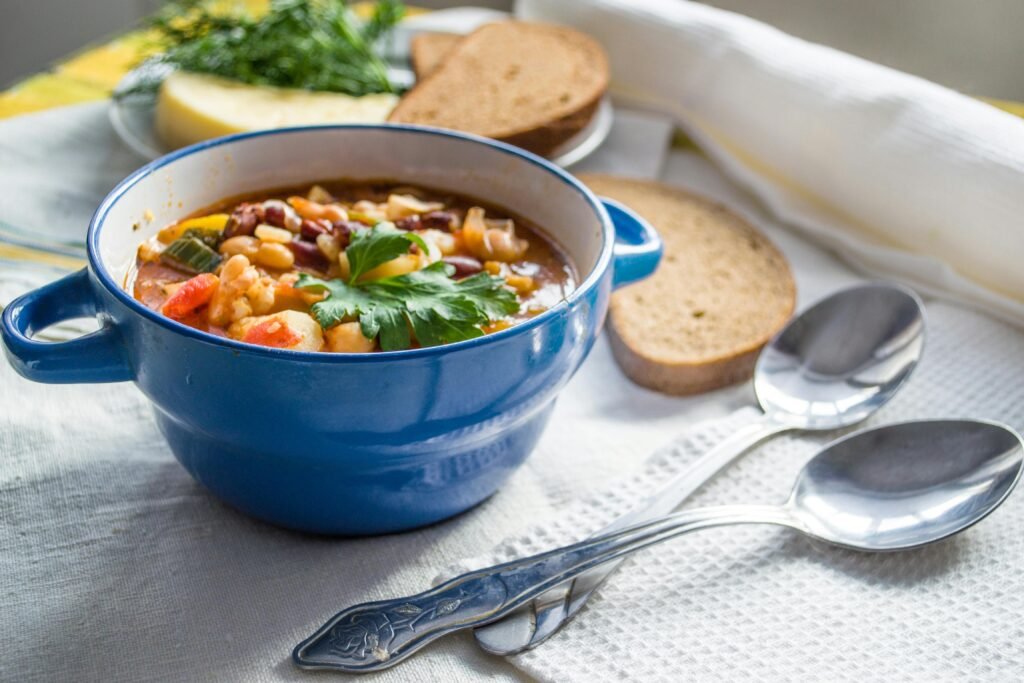
This hearty vegetable soup is pure comfort food.
Made with leftover bread, beans, and whatever vegetables are in season, it’s the epitome of Tuscan peasant cooking turned into something absolutely delicious.
The name literally means “reboiled” because traditionally, it was made from leftover minestrone that was reheated the next day with bread added to thicken it.
Every family has their own recipe, so you’ll taste different versions depending on where you try it.
Lampredotto

Okay, I’ll be honest – this one takes some courage.
Lampredotto is a sandwich made from the fourth stomach of a cow, slow-cooked with vegetables and herbs, then served on a crusty roll with salsa verde or hot sauce.
I was terrified to try it at first, but it’s actually incredibly flavorful and tender.
The texture is similar to pulled pork, and the seasoning is fantastic.
You’ll find it at food trucks around the city, especially near the Central Market.
Cantucci and Vin Santo

This is the perfect way to end any meal in Florence.
Cantucci are twice-baked almond cookies that are traditionally dipped in Vin Santo, a sweet dessert wine.
The cookies are hard and crunchy on their own, but when you dip them in the wine, they soften slightly and create this amazing combination of textures and flavors.
It’s like the Italian version of cookies and milk, but way more sophisticated.
Schiacciata
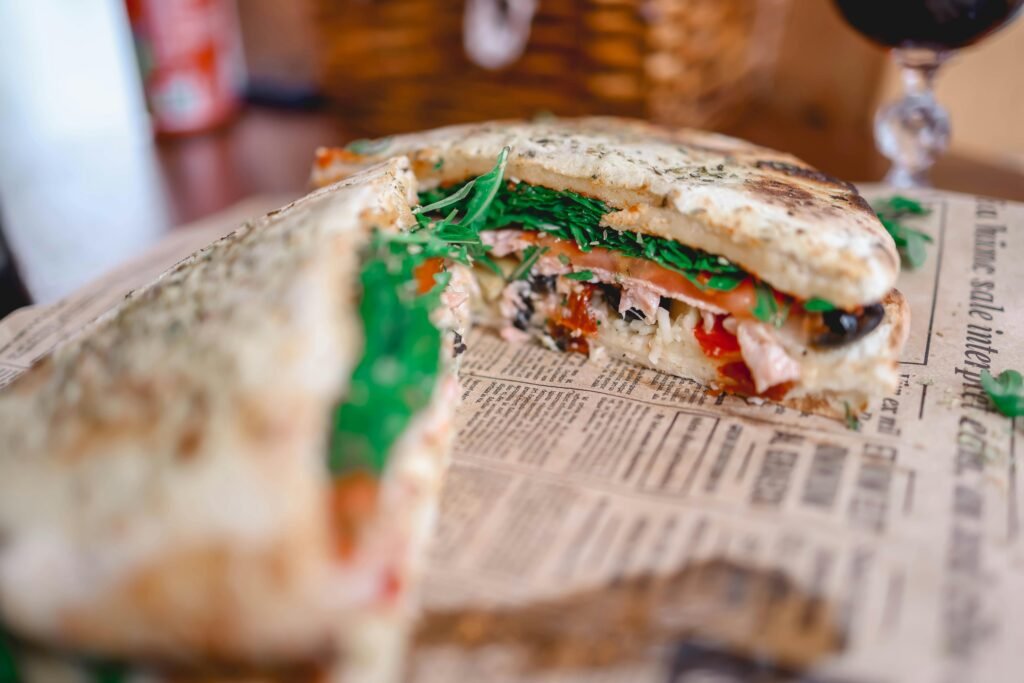
This flatbread is Florence’s answer to focaccia, but it’s thinner and often topped with just olive oil and salt.
You’ll find variations with grapes during harvest season, or stuffed with prosciutto and cheese for a quick lunch.
The best schiacciata has a crispy crust with a slightly chewy interior.
I love grabbing a piece from a local bakery for breakfast with my morning cappuccino.
How to Choose the Right Food Tour
Consider Your Group Size
Small groups (6-12 people) offer more personalized attention and flexibility.
You can ask questions, get custom recommendations, and often visit smaller, family-run establishments that can’t accommodate large crowds.
Larger groups (15-25 people) are usually less expensive but can feel rushed.
You might miss out on intimate conversations with restaurant owners or detailed explanations about food preparation techniques.
Check the Duration and Pace
Most tours range from 2.5 to 4 hours.
Shorter tours focus on 4-5 stops with smaller tastings, while longer tours include more substantial food portions and additional stops.
Think about your eating schedule and energy level.
If you’re planning dinner after your tour, a lighter afternoon tour with small bites might be perfect.
If you want the tour to serve as your main meal, look for options that include more substantial portions.
Read Reviews Carefully
Pay attention to recent reviews that mention specific foods tried, restaurants visited, and guide quality.
Look for comments about group size, pace, and whether dietary restrictions were accommodated.
Red flags include reviews mentioning rushed timing, overcrowded restaurants, or guides who seemed uninterested.
The best tours have guides who are genuinely passionate about food and happy to share their knowledge.
Consider Your Dietary Needs
Most tour companies can accommodate vegetarians, but vegan options might be limited since traditional Tuscan cuisine relies heavily on meat and cheese.
Gluten-free travelers should inquire specifically about options, though many places now offer gluten-free pasta and bread.
Always communicate dietary restrictions when booking, and confirm again when you arrive for your tour.
Good guides will have backup options and know which restaurants can accommodate special needs.
Best Neighborhoods for Food Tours
San Lorenzo and Central Market Area
This is food tour central, and for good reason.
The covered market has been operating since 1874 and offers everything from fresh produce to prepared foods.
You’ll find traditional vendors alongside newer artisanal shops.
The surrounding streets are packed with trattorias, wine bars, and specialty food shops.
This area gives you the perfect mix of tourist-friendly options and authentic local spots.
Oltrarno District
This is where many locals actually eat, especially around the Santo Spirito area.
The restaurants here tend to be smaller, family-run establishments with lower prices and more traditional menus.
Food tours in Oltrarno often include visits to artisan workshops where you can see traditional crafts being made alongside food tastings.
It’s a great way to experience Florence’s artistic heritage along with its culinary traditions.
Santa Croce Neighborhood
This area offers a good balance of historical sites and food experiences.
You’ll find everything from high-end restaurants to casual wine bars, plus several excellent gelaterias.
The neighborhood is less crowded than the city center, which means you can actually enjoy your food without fighting through tourist crowds.
Many tours include stops at local bakeries and specialty food shops.
Historic Center (Duomo Area)
While this area has plenty of tourist traps, knowledgeable guides know which hidden gems offer authentic experiences.
You’ll pay slightly higher prices, but the convenience and atmosphere can be worth it.
Tours in this area often combine food stops with historical information about the buildings and streets you’re walking through.
It’s perfect if you want to mix sightseeing with eating.
What to Expect: Cost and Booking Information
Pricing Ranges
Basic walking food tours typically cost 60-90 euros per person for 3-4 hours, including 6-8 food tastings and 2-3 wine samples. Premium tours with more exclusive restaurants or private experiences can run 120-200 euros per person.
Cooking classes combined with market tours usually range from 80-150 euros, depending on the duration and number of dishes you’ll prepare. Wine-focused tours tend to be slightly more expensive due to the cost of quality wine tastings.
Booking Recommendations
Book at least 2-3 days in advance during peak season (April-October), especially for smaller group tours that fill up quickly. Many companies offer free cancellation up to 24 hours before the tour.
Look for companies that provide detailed itineraries so you know exactly what’s included. Be wary of tours that are vague about specific stops or food items – this often indicates a lower-quality experience.
What’s Usually Included
Most tours include all food tastings, basic wine samples, and bottled water. Some provide small snacks or appetizers between stops to keep your energy up.
Transportation is typically walking, but some tours include short taxi rides or public transport between distant neighborhoods. Tips for guides are not usually included, and 10-15% is standard for good service.
Common Mistakes to Avoid
Eating a Big Meal Before Your Tour
I learned this lesson the hard way during my first food tour in Florence. I had a huge breakfast thinking I needed energy for all the walking, then couldn’t appreciate any of the amazing foods we tried because I was already full.
Trust me, the tour will provide plenty of food. Stick to coffee and maybe a small pastry beforehand, especially if you’re doing a lunch or dinner tour.
Focusing Only on Famous Dishes
Yes, you should try bistecca alla fiorentina and ribollita, but don’t miss out on lesser-known specialties that locals actually eat regularly. Some of my best food discoveries came from trying things I’d never heard of.
Ask your guide about seasonal specialties or family recipes that aren’t on typical tourist menus. These often end up being the most memorable parts of the experience.
Not Communicating Dietary Restrictions
Florence’s traditional cuisine is heavy on meat, cheese, and gluten, so vegetarians, vegans, and those with celiac disease need to speak up early and often. Don’t assume restrictions will be remembered or accommodated without clear communication.
Most guides are happy to work with dietary needs if they know about them in advance, but last-minute requests can be difficult to handle, especially at smaller establishments.
Rushing Between Stops
Food tours are about more than just eating – they’re cultural experiences. Take time to observe the restaurants, chat with owners when possible, and soak in the atmosphere of each neighborhood.
I see too many tourists wolfing down food and immediately asking about the next stop. Slow down, enjoy the moment, and appreciate the stories and traditions behind what you’re experiencing.
Not Tipping Your Guide
This isn’t mandatory, but good food tour guides work hard to create memorable experiences and often have relationships with restaurant owners that benefit your tour. A 10-15% tip is standard for excellent service.
If your guide goes above and beyond – providing extra recommendations, helping with reservations, or accommodating special requests – consider tipping on the higher end or leaving a positive review online.
What Makes Florence Food Tours So Special
Let me tell you something – I’ve been on food tours all over Italy, and there’s something uniquely magical about Florence’s culinary scene.
The city sits right in the heart of Tuscany, which means you’re getting ingredients that are literally grown in some of the world’s most fertile soil.
We’re talking about olive oil that’s pressed from trees that have been producing olives for hundreds of years, wines from vineyards that date back to medieval times, and vegetables grown using techniques passed down through generations.
But here’s what really sets Florence apart: the locals are absolutely passionate about their food traditions.
I remember chatting with a fourth-generation butcher in the San Lorenzo market who told me his great-grandfather’s secret for selecting the perfect cut of Chianina beef.
That kind of knowledge doesn’t exist in guidebooks – you only get it by connecting with the people who live and breathe this stuff every day.

